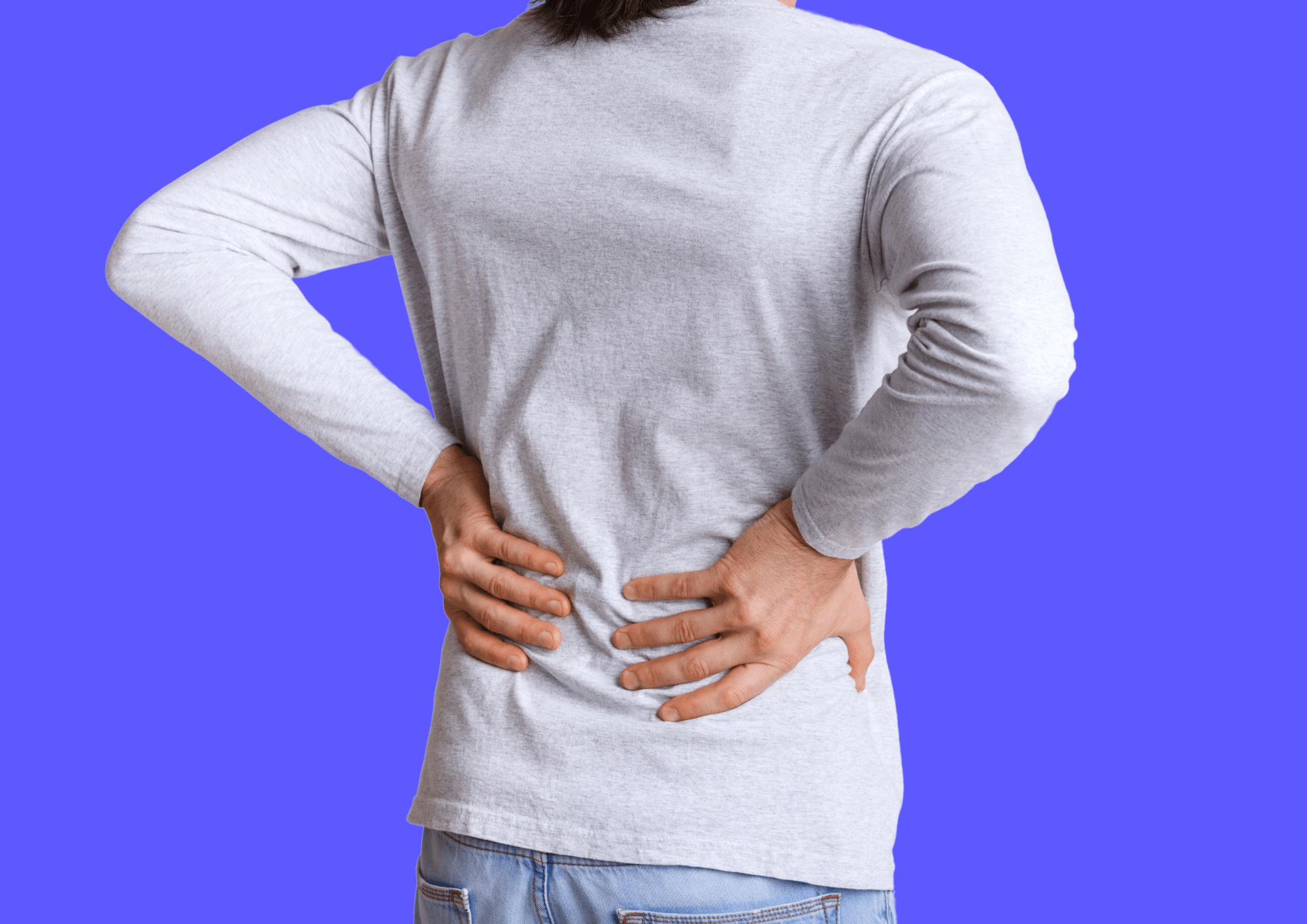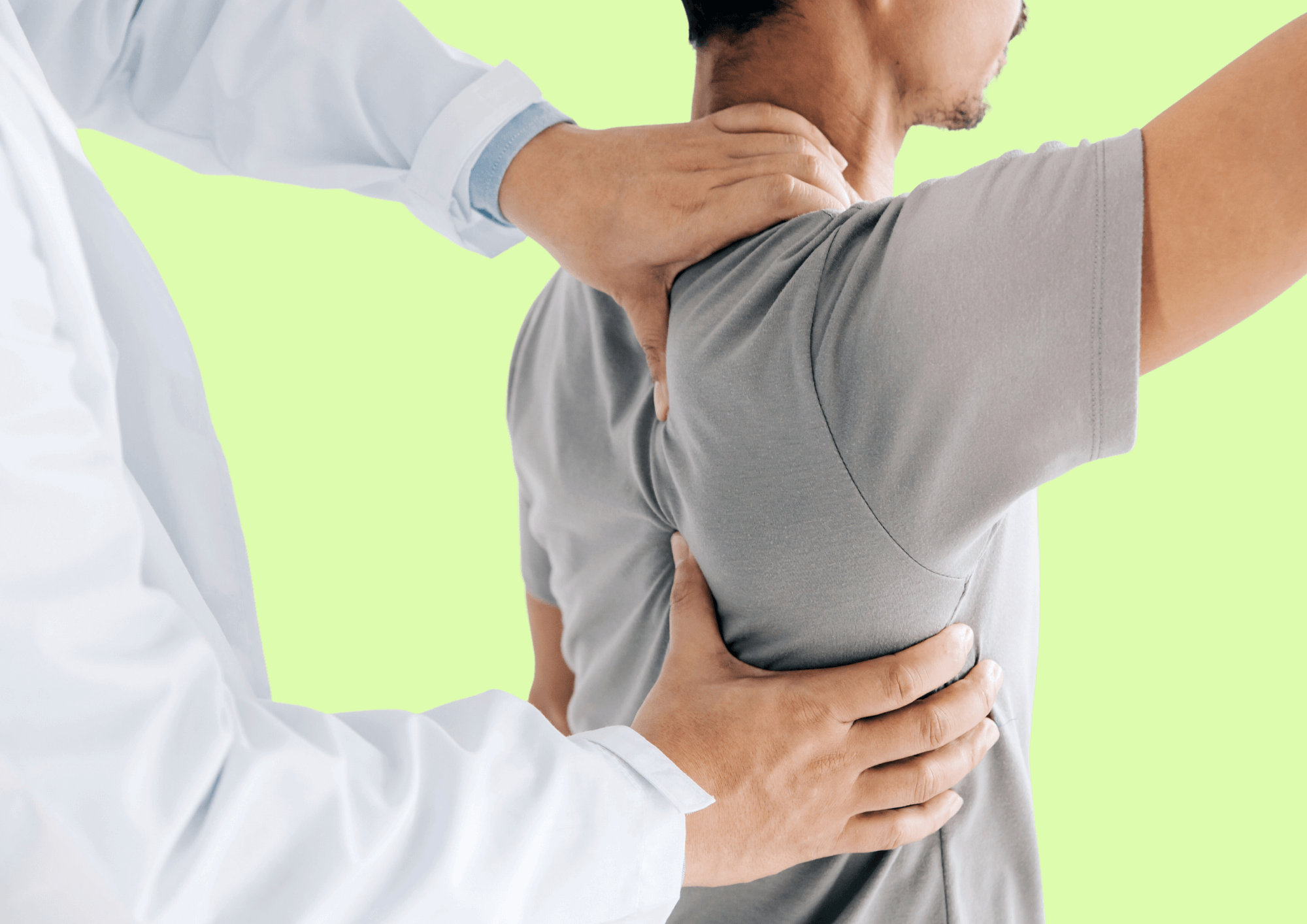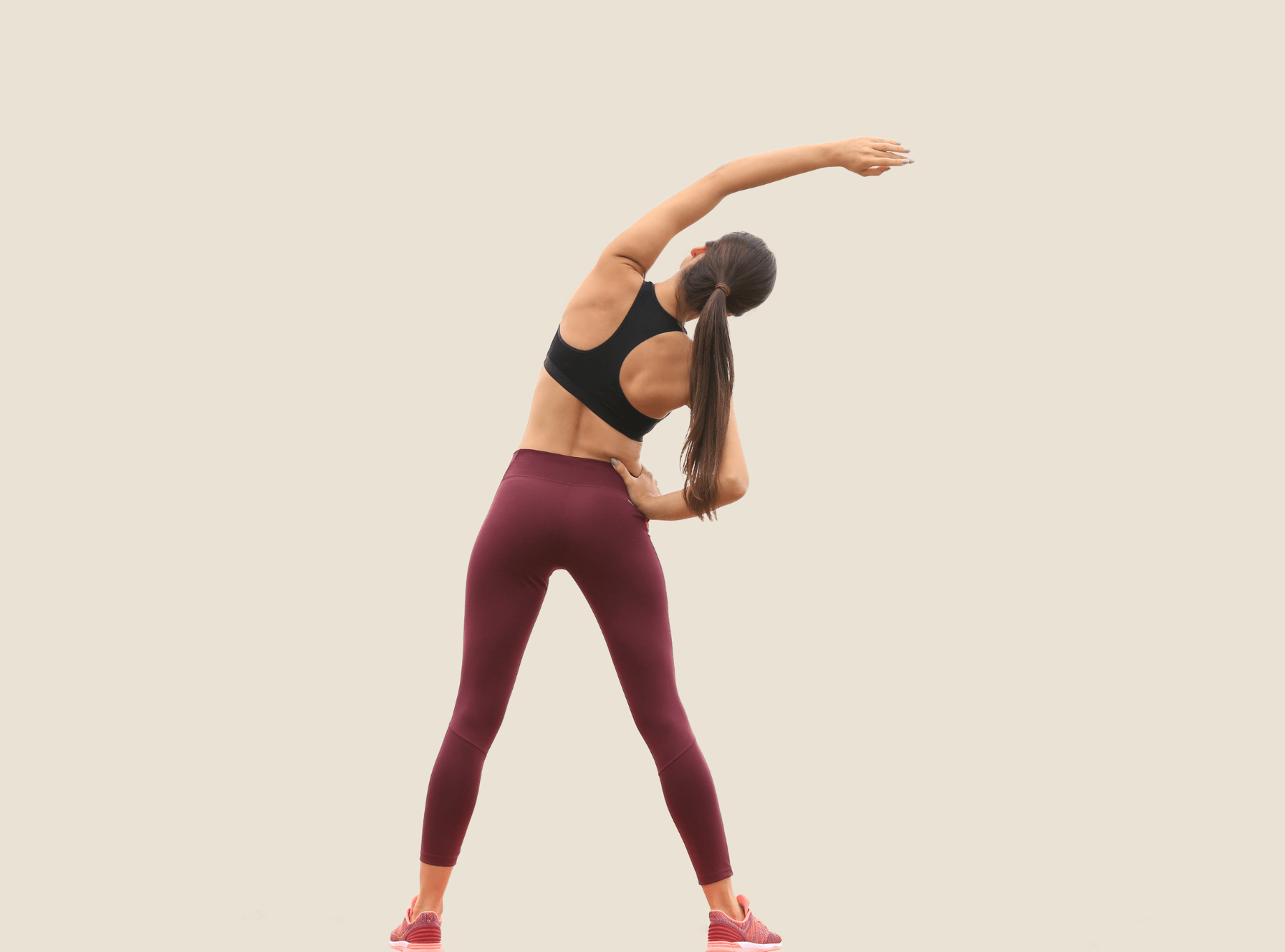Many of us are confronted with one form of back pain or another in the course of our lives. The so-called dorsalgia has evolved to a real widespread disease. According to a report of the Swiss medical journal, up to 67% of the Swiss population suffer from back pain several times a year. Pain in the lower part of the back is particularly common. Are you also affected by lower back pain or would you like to learn more about it? In this article you will find information about the most common causes of lower back pain, possible treatment approaches and how you can prevent it.
The lumbar spine - here's how it is structured
Before we get into the various causes of lower back pain, we'd like to briefly touch on the structure of the lumbar spine. The lumbar spine refers to the lower section of the spine and includes its last five vertebrae. The intervertebral discs are located between these five lumbar vertebrae. They ensure the mobility of the spine and act as a buffer or cushion between the individual vertebrae.
In our everyday lives, the lower back and lumbar spine are subjected to a great deal of stress. Due to our upright gait, it carries the entire weight of the upper body and transmits it via the sacrum to the sacroiliac joint, which eventually leads to the lower extremities. Frequent sitting and incorrect posture also put immense strain on the lower back. It is therefore not surprising that the lumbar region shows signs of wear and tear over the course of a lifetime and that overuse, accidents and some medical conditions can also lead to pain.

What are the most common causes of back pain?
Based on various symptoms, the cause of back pain can be identified. A distinction is made between non-specific and specific back pain. In the case of non-specific back pain, there is no clear evidence of a specific medical cause - it is assumed that lack of exercise or obesity is the underlying cause.
Specific back pain, on the other hand, has a diagnosable cause, the targeted therapy of which can alleviate the pain or eliminate it entirely. It is important to mention that the origin of the disease does not necessarily have to be in the lumbar region, but can also be due to diseases of the organs.
Below we have compiled the most common causes of low back pain:
Muscle tension in the lower back
Symptoms
Burning, pulling or stabbing pain in the lumbar region. The pain unfolds slowly and increases with movement. Muscle weakness and sleep disturbances may occur. Tension may be felt in the form of nodules and hardening of the muscles. Tension is often accompanied by ischialgia and ISG blockage.
Treatment
For this type of lower back pain, relief with pain medication from the pharmacy and a relaxing hot water bottle is the best strategy. Further, plenty of rest and gentle self-massage can be beneficial. Caution: If no measures are taken to relieve the pain, many sufferers adopt a protective posture, which can lead to incorrect strain on the muscles. This can increase the pain and promote additional tension.
Wear-related and degenerative diseases of the spine
Symptoms
In the case of wear-related spinal diseases such as spinal stenosis and spondylolisthesis, the symptoms increase gradually. In the beginning, they can only be observed after physically strenuous work or during sports. With increasing age, the pain persists even when standing, sitting or lying down and can radiate into the legs or arms. In addition, the mobility of the spine is increasingly limited. Weakness in the legs leads to problems when walking. In the case of spondylolisthesis, a feeling of instability in the back is also observed. If the nerves are affected by wear and tear, additional paralysis or numbness may occur. Herniated disc and ISG syndrome are also among the degenerative lumbar spine disorders.
Treatment
The treatment of spinal disorders caused by wear and tear can consist of various approaches - for example, pain therapy with medication, orthopedic devices, physiotherapy, heat or cold applications or injections are used. If these therapies are unsuccessful in relieving symptoms, surgery may be a solution. These include, for example:
- Microsurgical disc and spinal stenosis operations.
- Stabilization surgery for spondylolisthesis or correction for spinal deformities such as scoliosis, or for inflammation of the spine
- Vertebral body and intervertebral disc replacement operations
- Silencing of the pain sensation of the vertebral joints in the case of facet pain
Herniated disc
Symptoms
Typical symptoms of a herniated disc are pain in the lumbar spine that radiates to the buttocks, legs and feet. The pain is aggravated by movement, coughing or sneezing. In some circumstances, numbness and tingling may also occur. A herniated disc can also affect the thoracic spine and cause neck pain, as well as upper back pain. Caution: If paralysis or disturbances in bladder or bowel function occur, a health care provider must be contacted immediately to prevent irreversible damage to the nerves.
Treatment
In the case of a herniated disc, conservative treatment such as conscious exercise and relaxation prescribed by a physical therapist, as well as painkilling and anti-inflammatory medications, is usually sufficient. Healing proceeds faster if regular exercises are done for regeneration. In case of previously mentioned disturbance of bladder and bowel function or paralysis, emergency surgery must be performed.

Sacroiliac joint blockage
Symptoms
Pain in the lower back, buttocks, groin and thighs. The pain is increased when walking or moving, and prolonged sitting may also increase the pain. Movement in the hip area is limited, and tingling in the lower extremities may occur.
Treatment
A first-time, acute sacroiliac joint blockage may resolve on its own. If it is chronic, it usually requires prolonged treatment. In most cases, conservative therapy of the sacroiliac joint blockage is sufficient. Physiotherapy, acupuncture and pain pills are used. It is important to note here that bed rest can worsen the symptoms, which is why it is advisable to keep moving as much as possible. If these treatment approaches do not work, hyaluronic acid injections can provide relief.
Caution: Sacroiliac joint blockage is sometimes confused with a herniated disc - they can be distinguished from each other with a magnetic resonance imaging (MRI) scan.
Lumbago
Symptoms
Sudden onset of severe pain over the buttocks stiffens the spine and prevents movement of the sacrum and lumbar spine. Stretching or bending is unthinkable. In addition, a hardening of the back muscles can be felt. Even slight pressure in the area of the lumbar spine causes pain.
Treatment
Avoid standing still, bed rest as well as relieving posture. Regular stretching exercises can prevent as well as counteract acute lumbago. Heat patches or warm showers relax the hardened muscles, and alternating lying on different sides relieves the spine. Lumbago is usually short and severe - after a few days you should be on the road to recovery even without medical or physiotherapeutic treatment.
Sciatica (irritation of the sciatic nerve)
Symptoms
Irritation of the sciatic nerve manifests itself in sudden, sharp pain that can radiate from the lower lumbar spine into the buttocks, through the thighs, and into the feet. Often the pain in the lower back is not as severe as in the buttocks or legs. There may be numbness and motor impairment - in rare cases, severe paralysis is possible. If it affects urination or bowel movements, you should definitely consult a doctor.
May occur in conjunction with disc herniation.
Treatment
Common painkillers have comparatively little effect on sciatica. Simple stretching exercises can help relax the cramped muscles. Usually, sciatica does not require surgery or other medical treatments.
Diseases of the organs
Other possible causes are organic - for example, acute prostatitis, inflammation of the kidney pelvis, kidney stones, shingles. Lung problems (chest tightness, pneumonia), or heart problems (heart attack) can also cause lower back pain.
Important: Regardless of whether it is non-specific or specific lower back pain, you should keep an eye on its duration. Pain that persists for a long period of time can develop into chronic pain, which can have many psychological and physiological effects. But at what point does one speak of chronic pain?

Duration of pain: acute, subacute or already chronic?
For proper diagnosis and effective treatment, it's important to divide pain into acute, subacute and chronic based on how long you've been dealing with the pain.
- Acute back pain
Acute pain is pain that occurs for the first time in your life or for the first time in at least six months. Acute pain usually gets better in a few weeks and lasts a maximum of six weeks. - Subacute back pain
When pain lasts between six weeks and three months, it is classified as subacute. - Chronic back pain
Pain that lasts longer than 12 weeks is considered chronic. It is often recurrent pain that varies in severity. As we age, chronic back pain often occurs in combination with other conditions.
Preventing back pain - what you can do
Better safe than sorry: The following checklist summarizes how you can prevent back injuries and adapt your lifestyle for a healthy back.
- Regular exercise integrated into everyday life
- Strengthening of the back muscles and back-friendly sports such as swimming or cycling
- Reducing any excess weight
- Correct bending, lifting and carrying - avoid one-sided strain
- Good posture
- Ergonomically designed workplace, avoid sitting for long periods of time
- Reduce stress, promote relaxation

About Akina
AI-assisted movement therapy
Akina guides your every movement, paving the way to a better life. With AI-assisted movement and instant feedback, we make movement more enjoyable and effective for patients exercising at home. We empower physical therapists to stay in dialogue with their patients and stay ahead of the curve of connected care.
Relieve pain
Get into a guided movement routine to actively manage and relieve pain. Through AI movement support, you'll receive regular feedback from your therapist as well as seamless progress tracking. Akina gets you moving and keeps you moving.
Improve mobility
Start regular guided movement today to get more mobility and freedom. Experience how Akina gets you back to your active life - one step at a time.




